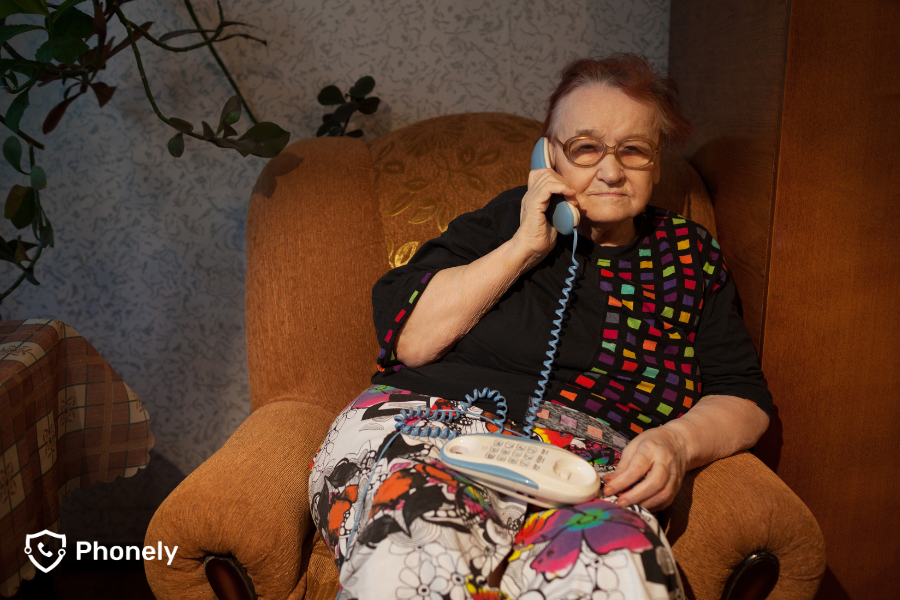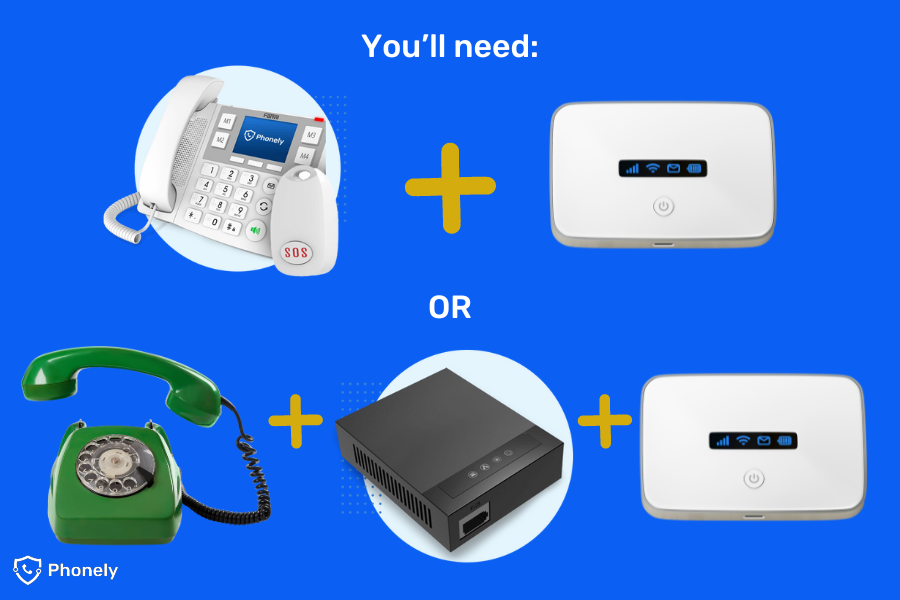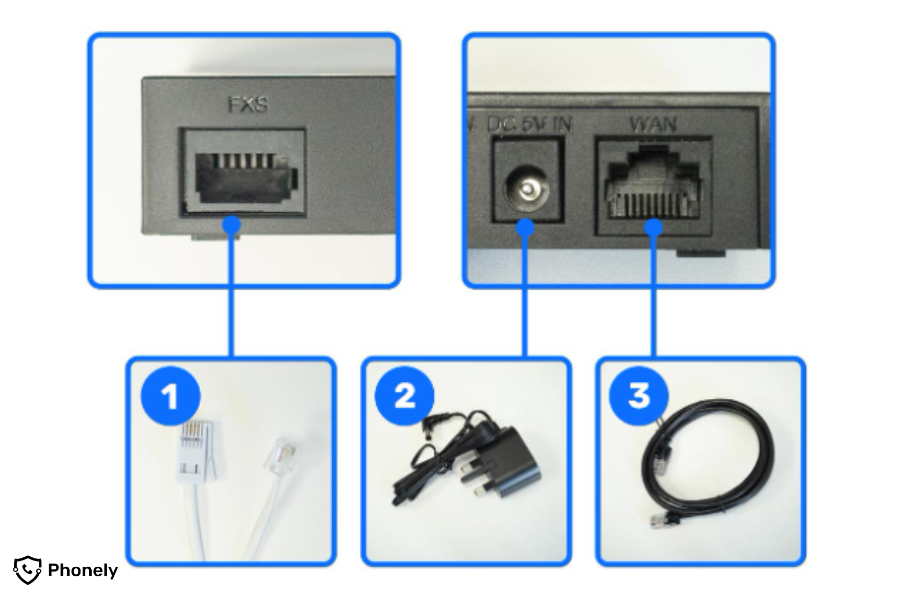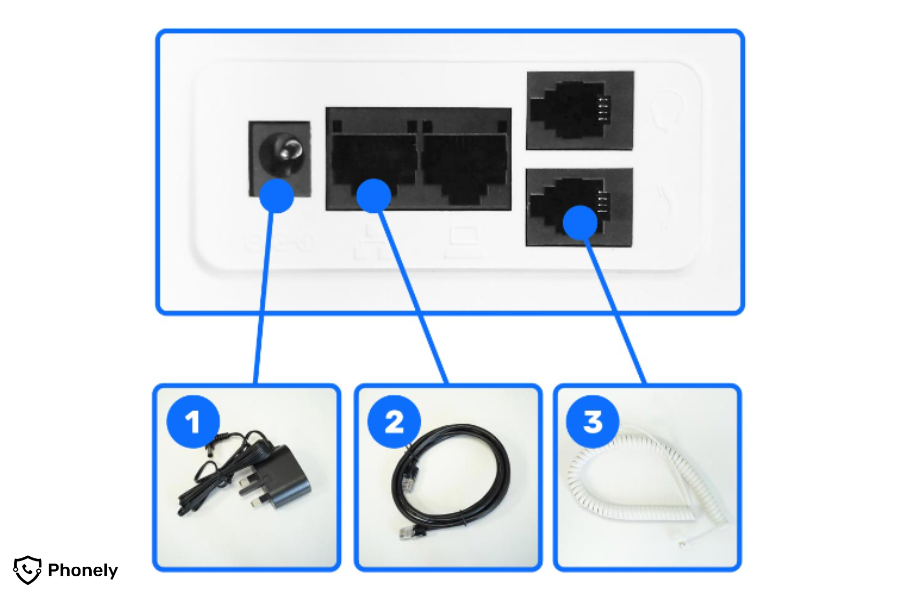Having any new technology can be daunting, especially if you weren’t keen on having it in the first place! This can definitely be said for digital voice and VoIP phones. With the copper wire network (PSTN) being retired at the end of January 2027, those of us who still have our analogue phones plugged into the wall will be forced to make the upgrade and set up VoIP at home.
For people who already have a VoIP home system setup, they’ve found the transition quite easy and pretty painless. Of course, it helps that digital voice offers a host of advantages over the century-old landlines. Call quality is crisper and clearer. Depending on your provider you can get features such as voice mail, call blockers and call forwarding. Here at Phonely, VoIP technology has allowed us to produce CallGuard, a system that blocks phone criminals at every turn. Plus we should also mention that you could save a tidy sum each month too. Digital voice doesn’t require a bulky infrastructure like PSTN so costs less for providers to maintain.
If you’ve not switched over to home VoIP but are more than happy to make that move and start saving money, we’ve put together an easy-to-understand guide on how to set up VoIP at home.

VoIP equipment: what you’ll need
To set up VoIP or digital voice at home, you will need a few things, some of which you may already have.
- A reliable internet connection. VoIP runs via your internet, so you’ll need a stable and reliable broadband service and router. Don’t worry though, you don’t have to have ultra-fast gigabit speeds or fibre to the premises for voice calls. A basic package from almost any provider will do the job.
- A digital voice adapter or VoIP-enabled phone: Either of these devices will connect to your internet router and allow you to make VoIP calls. You have two options.
- A VoIP adapter – A small box that lets you use your existing analogue home phone handset for VoIP calls. Just connect it to mains power, your router, and your regular phone.
- A VoIP phone – These specialised VoIP phones connect directly to your router via an Ethernet cable, with no adapter required.
And that’s it! Let’s move on to setting up your home VoIP system.

How to set up VoIP at home
Once you’ve found the perfect home VoIP service provider, you will then need to set up your new VoIP equipment. We show you just how to do this below.
If you’re using a digital voice/VoIP home phone adapter
Using a VoIP adapter means you can keep the analogue phone that you’re used to using. Here’s how to connect it to start using your VoIP system.
- Insert your existing BT telephone cable into the FXS port and connect the other end of the cable to your phone.
- Connect the power source plug into the back of your new adapter and then plug it into the wall power socket.
- Connect the Ethernet cable to your new adapter and your internet router.

If you’re using a new VoIP phone
Having a new VoIP phone means you will have access to features you may not have on your analogue phone such as caller ID, call waiting and call forwarding. Plus your communication will be far more clearer. Here’s how to connect your new VoIP phone.
- Connect the power plug to the back of your VoIP phone and then into the wall power socket.
- Connect the Ethernet cable to your phone and your internal router.
- Connect your VoIP handset cord to the back of the handset and the back of the phone.

Testing Your VoIP System
With your new VoIP up and running, you’ll need to test it out. To do this simply pick up your handset and dial a friend’s number as you normally would. The call should connect just like before, but now the voice data is being transmitted over your broadband instead of your outdated copper wires.
If you find you have no dial tone or can’t make a test call, double-check all the connections and restart your devices. If you’re a Phonely customer, our friendly support team is also available to help if needed.

Troubleshooting common VoIP issues
If you’re facing issues after setting up your VoIP system, here are a few common problems and solutions:
- No dial tone: Ensure all cables are securely connected, and your router has internet access.
- Poor call quality: Try restarting your router and VoIP phone. If the problem persists, check your internet speed or contact your provider.
- Can’t make calls: Confirm that your VoIP service is active and the settings are configured correctly. Phonely’s support team can assist with these checks.
FAQs about VoIP setup
What equipment do I need to set up VoIP at home?
You’ll need a stable internet connection, a VoIP adapter for your existing phone, or a VoIP-enabled phone. Some providers may include the necessary equipment when you sign up. At Phonely, we’ll send you a free adapter if you pay for your first year’s plan in full.
How much does it cost to set up VoIP at home?
The cost can vary. If you already have broadband, you may only need to buy a VoIP adapter or phone, which can range from free to upwards of £100. VoIP service plans are often more affordable than traditional phone lines.
What is the best VoIP phone for home use?
The best VoIP phone depends on your needs.
Can I keep my old phone number with VoIP?
Yes, most VoIP providers, including Phonely, allow you to port your existing number to your new VoIP service.
How do I choose the right VoIP provider?
Consider factors like call quality, customer support, and additional features like call blocking. Phonely’s CallGuard offers the best scam protection available, making it an excellent choice.
Can I just plug my VoIP phone into my router?
If your VoIP phone has been purchased from your VoIP provider then yes, it should be what we call plug-and-play. If you have purchased your VoIP phone from a third party, you may need to configure it before it will work.
And that’s really all there is to it!
As you can see, you only need to carry out a few simple steps to get your home phone VoIP up and running. Moreover, once you’re all plugged in you’ll be able to appreciate the crystal-clear calling, awesome features like Phonely’s CallGuard, and much cheaper monthly bills.
The telecoms industry is changing whether we want it to or not, but Phonely is here to make sure you’re prepared every step of the way. If you have any other questions about switching to VoIP, give us a call or check out our helpful guides on the Phonely website.

Leave a Reply